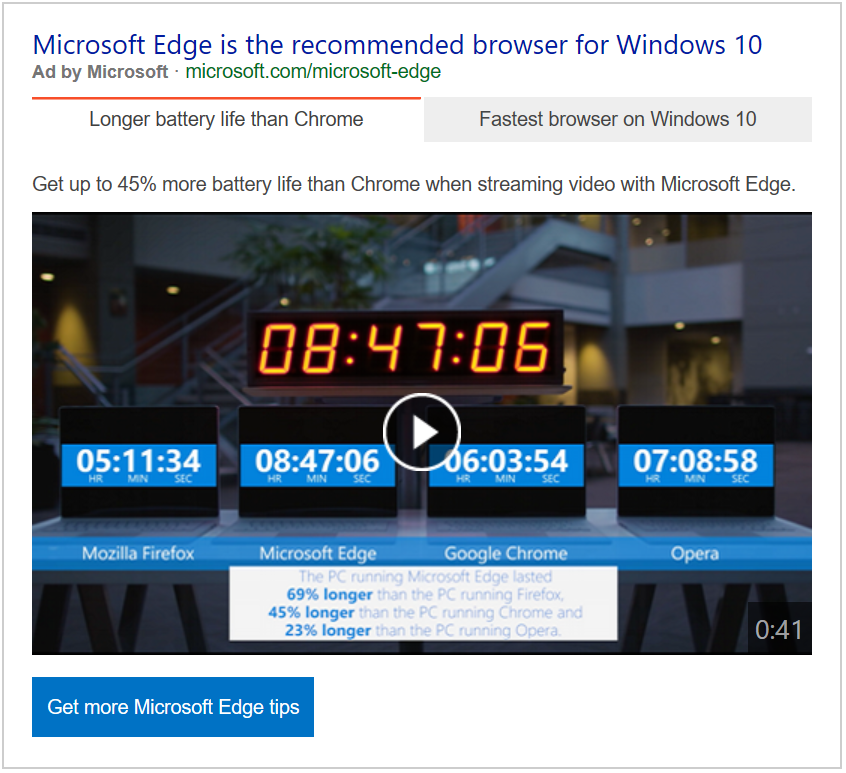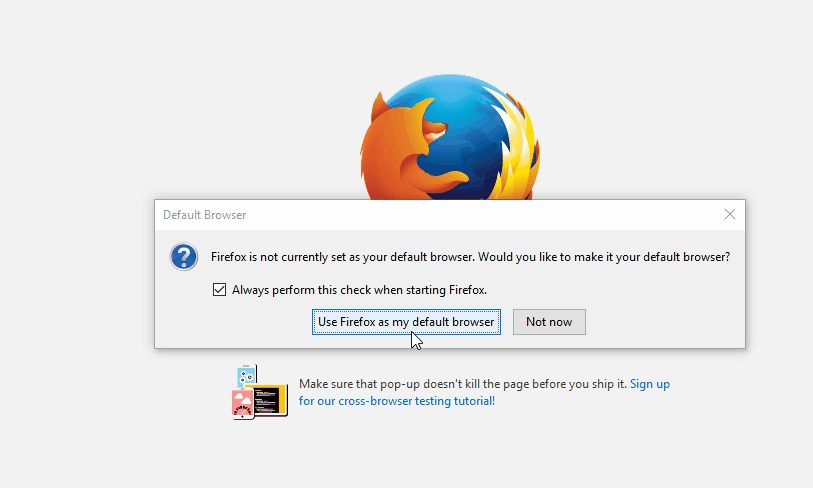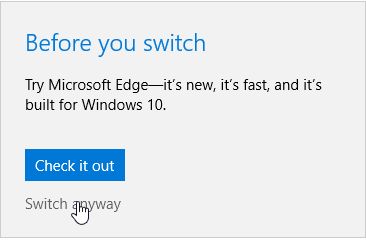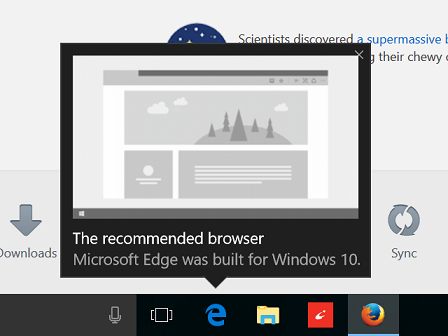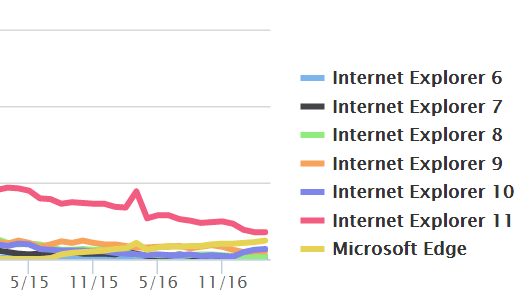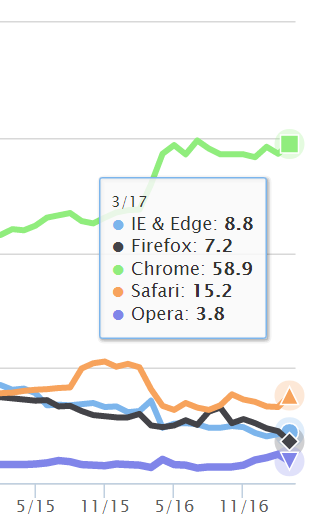Microsoft are a long time players in the browser wars with the Internet Explorer browser – but it has a problem, a branding problem – no matter how much they improve Internet Explorer it will always be remembered for it’s poor performance and inability to stick to web standards – making it equally frustrating for users and developers.
Enter Microsoft Edge – Microsoft’s new and improved browser that was first introduced with Windows 10.
But even with the free upgrades to Windows 10 they’ve failed to make any real impact against Google Chrome.
What’s interesting is the ways Microsoft tries to encourage you to stick to use Edge, the default browser, in Windows 10.
Searching for other browsers. What’s the best use of Internet Explorer? – Searching for another browser. Microsoft have taken note of this and now when you use Bing, their search website, to search for another browser you get a little video advertisement promoting the benefits of Edge.
Windows 10 makes it harder to change browsers. In previous versions of Windows you would see a prompt and click to set the new browser as the default – but with Windows 10 you now need to click, wait for the ‘choose default apps’ window to open, navigate it and click and choose the new default browser. Making things harder to do is a strong tool to control what people do, and it’s clear what their objective is here.
Are you sure? Even after clicking through to change the browser you get Edge pushed at you with a message that reads:
Before you switch Try Microsoft Edge - it's new, it's fast, and it's built for Windows 10.
Prompts when first loading another browser. Windows 10 knows all – and this includes when you first load another browser – you soon see a prompt that reads:
The recommended browser Microsoft Edge was built for Windows 10.
Prompts when launching Edge. Even after all of this, if you go back to Edge you see another prompt which reads:
Do more with Microsoft Edge - the fast, new browser built for Windows 10.
This is a normal technique done by all browsers – but it is unique in that by this time you’ve already gone out of your way to change browser and dismissed several other prompts to change to back to Edge.
Despite all these measures, since it’s release in 2015 Edge has only slowly increased in usage – but Google Chrome remains the biggest share in browser usage.
Overall currently Internet Explorer and Edge have a 8% market share with Google Chrome having 58%
Reference: https://www.w3counter.com/trends
Does this signal the end of Microsoft being in the browser war? Even when they have 75% of the operating system market they’re failing massively to convert users to their browser. Chrome appears destined to become the new term to describe an internet browser – much like Googling has for searching.
